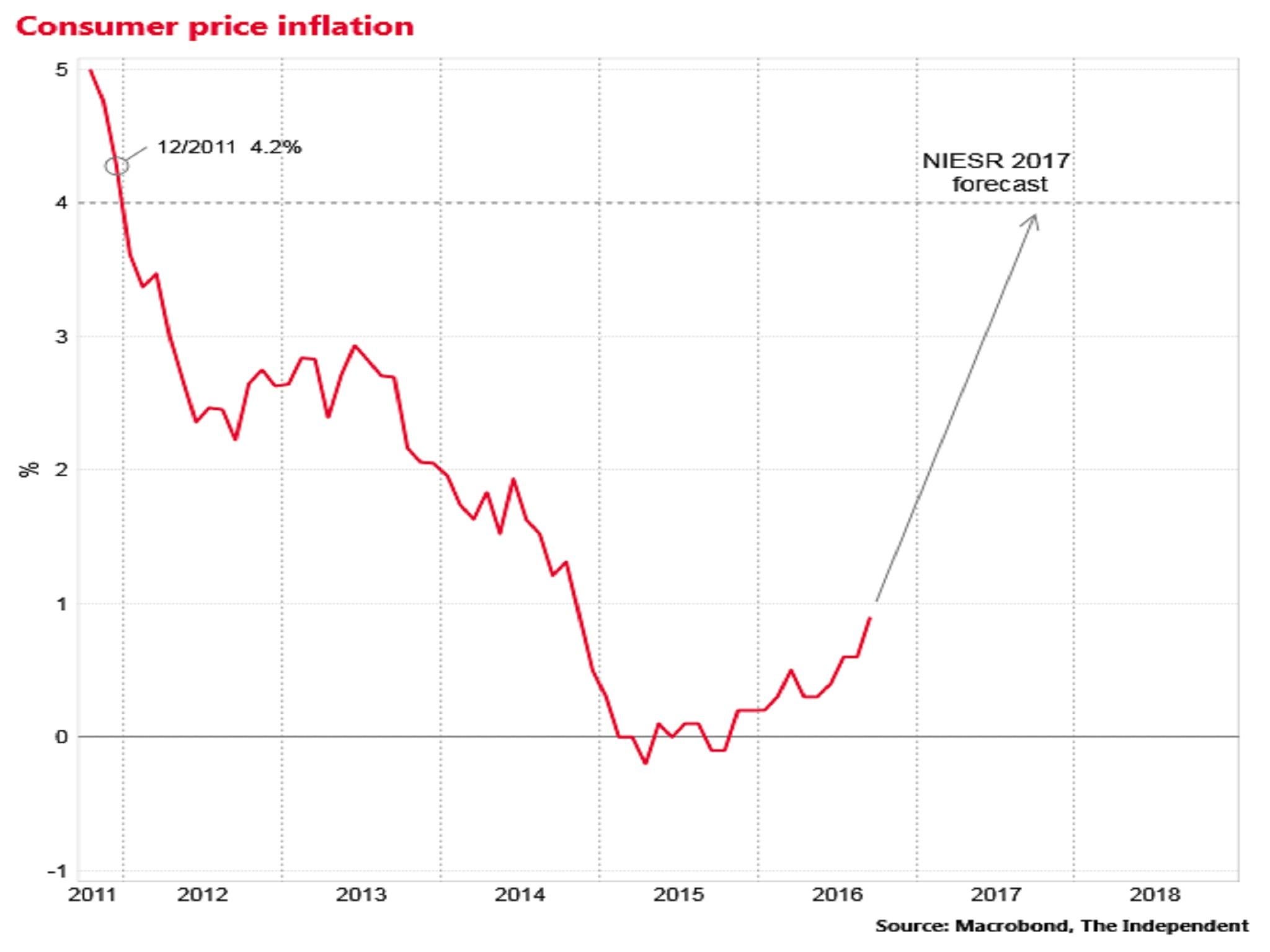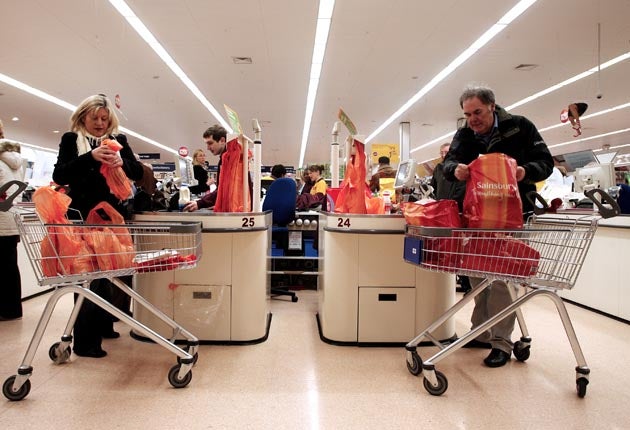Support truly
independent journalism
Our mission is to deliver unbiased, fact-based reporting that holds power to account and exposes the truth.
Whether $5 or $50, every contribution counts.
Support us to deliver journalism without an agenda.

Louise Thomas
Editor
Consumer price inflation will shoot up to 4 per cent in the second half of 2017 according to the latest forecast from the National Institute of Economic and Social Research (NIESR).
The latest reading for Consumer Price Inflation is 1 per cent, but the respected think tank identifies signs of “substantial impending inflationary pressure” thanks to the almost 20 per cent depreciation of sterling against the dollar since June’s Brexit vote.
The last time inflation was that high was in December 2011.
NIESR said such a spike in prices would harm households’ real disposable incomes and pin back GDP growth and living standards.
“While we expect this to be only a temporary phenomenon, it will nonetheless weigh on the purchasing power of consumers over the next couple of years,” said Simon Kirby, head of forecasting at NIESR.
Rising to 4 per cent?

Sterling’s fall has already pushed up manufacturer’s input prices steeply. According to the latest Purchasing Managers’ Index of the sector, published yesterday, they are rising at the fastest pace in 69 months.
Economists expect that these increases will soon be passed on to consumers.
A number of retailers have warned that prices will rise due the increasing price of imports.
NIESR’s 2017 consumer price inflation forecast is considerably stronger than that of the Bank of England in its August round of forecasts, which predicted 1.9 per cent price growth over the year.
But the Bank is widely expected to revise up its forecast significantly on Thursday when it releases its new Inflation Report.
The latest average forecast for inflation in 2017 from independent economists, recorded by the Treasury, is only 2.5 per cent.
NIESR said it expected the Bank of England to “look through” the near-term spike in inflation and not raise interest rates until the second half of 2019.
It forecast price inflation to fall back to the Bank’s 2 per cent target by 2020.
NIESR's GDP forecasts are for growth to moderate to 1.4 in 2017, down from 2 per cent this year.
It also said that the Bank’s August decision to cut interest rates to 0.25 per cent and increase its money printing programme by another £60bn will boost the level of GDP by 0.6 per cent and improve the public finances by £4bn a year over the next five years.
Subscribe to Independent Premium to bookmark this article
Want to bookmark your favourite articles and stories to read or reference later? Start your Independent Premium subscription today.

Join our commenting forum
Join thought-provoking conversations, follow other Independent readers and see their replies
Comments